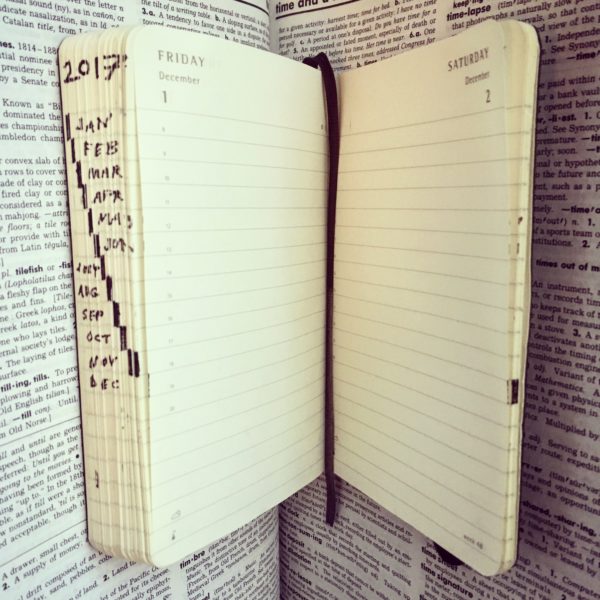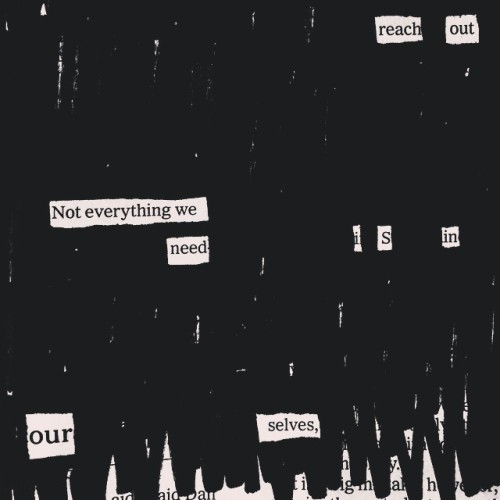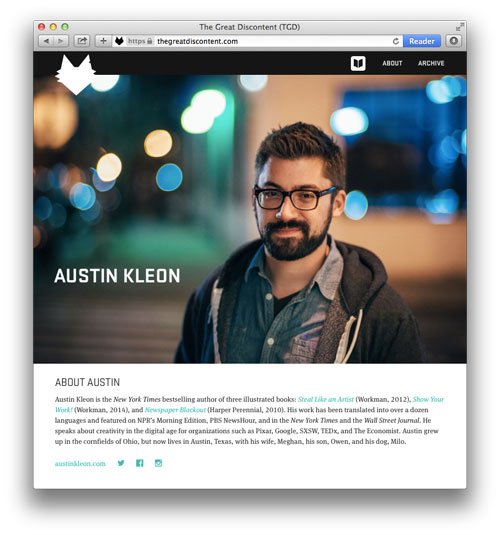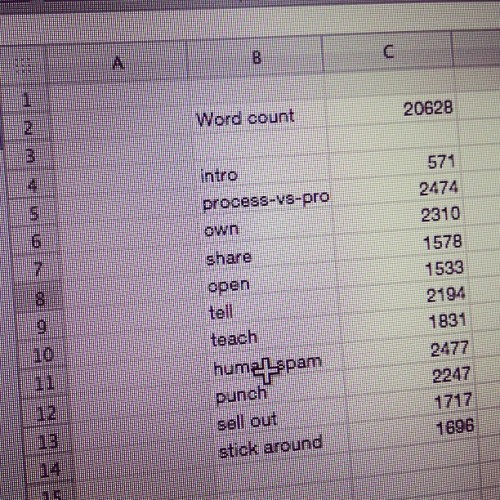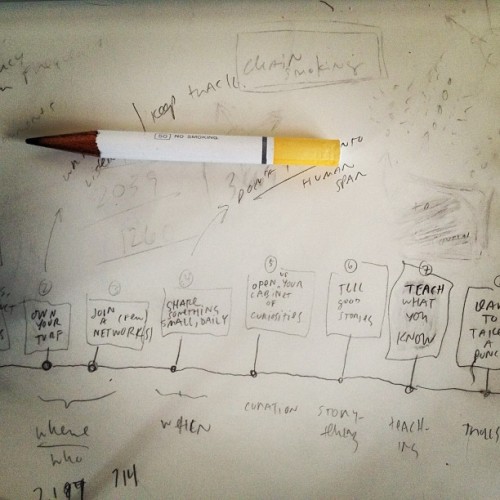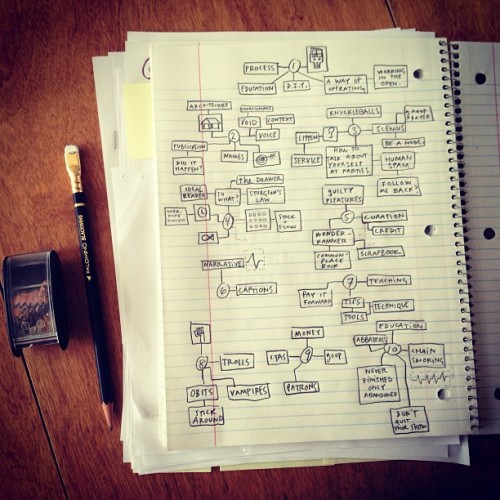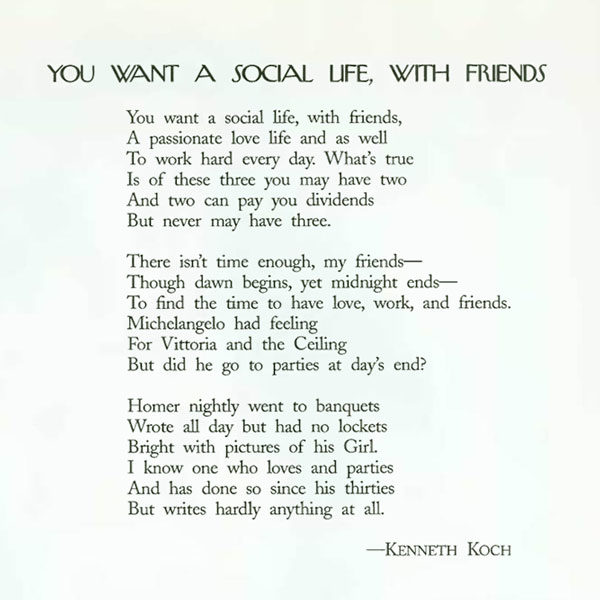
This is one of those poems you tape to the fridge. It ran in the May 18, 1998 issue of the New Yorker. You can find it in Koch’s Collected Poems. I love it because unlike many when they talk about “work-life balance,” there’s no value judgment, no correct answer, just Koch laying out the choices. Work, family, or friends: pick two. You can have it all, just not all at once. (Seasons, man.)
I thought of it again today because Jocelyn Glei made a supercut of some of her podcast guests’ answers to the question “What’s the key ingredient in work-life balance?” My answer was included in the batch (something about loving something more than your work, irreverence, ego, blah blah blah) but I wish I’d just recited the Koch.
One thing I did think was interesting: of the six guests, the two men, myself included, didn’t question whether such a thing as “work-life balance” was possible, while two of the women, both friends of mine, said they didn’t really believe in it or think about it — they didn’t see a big distinction between their work and their lives. On the whole, women have, historically, if they were lucky enough to have creative careers at all, not had much of a choice of easily separating work and life. (I think of poor Clara Schumann, raising seven kids as a widower and a performing artist. I mean, damn.)
There’s a great 2008 conversation between Muriel Murch and Eleanor Coppola on Murch’s podcast, Living With Literature. Coppola talks about the challenges of raising a family and supporting her husband, Francis Ford Coppola, while trying to do find time to do her creative work, too. She says she was always “trying to reconcile these two sides of myself.” She talks about being relieved to start shooting documentary footage on-set during Apocalypse Now so she had something creative to do with her talents other than go to the grocery and find a dry cleaner. (Read more in her books, Notes on a Life and Notes: The Making of Apocalypse Now.)
At one point, Coppola speaks explicitly about the different ways that men and women (with families) of her generation worked on their art:
The men artists I knew had a studio, and they went out to their studio, and they spent the day, and worked, and then they came back. I once read a book by Judy Chicago, who interviewed all these women artists, and they made their art on the back porch, they made it on top of the washing machine, they made it next to the kitchen sink, and they made it anywhere they could, for the hour and a half while their kid was taking a nap, and for the two hours while they were at the play group. They made it in between. It wasn’t, like, you get to make art for eight hours. You make art in 20-minute snatches, and you don’t, like, fiddle around. I know one time I went to see Francis in his working room, and he had his pencils all laid out, and his espresso there, and there was this whole little ritual of getting into yourself and into your work. There was no time [for women] for the ritual of getting into your work! You just snapped into that taking 10 minutes and making 3 lines on your drawing or whatever was possible. It wasn’t the same as the way men worked. And that’s how women got their work done.
Tillie Olsen, in Silences, writes: “More than any other human relationship, overwhelmingly more, motherhood means being instantly interruptible, responsive, responsible. Children need one now… It is distraction, not meditation, that becomes habitual; interuption, not continuity.” A mother can’t avoid interruptions, so she has to find a way of “scurrying,” as Muriel Murch puts it.
Coppola speaks of having to escape out into the garden, just to “catch a breath” and “hear yourself” and have some time with that creative voice that was speaking to her, and what a terrific luxury it was, later in life, when she was 60, and her kids were gone, and she could have a little studio of her own, outside the house, where she could work uninterrupted. (In spite of all she had to give up, she says she’s thrilled that her children are all good, creative people. “I think they’re my greatest artwork.”)

I am extremely fortunate that my wife stays home with our boys and I have a space of my own out in the garage behind the house where I can escape to work, but, especially now that the boys are older, I am trying to take inspiration from some of these artist/mothers, to counter the “pram in the hall” nonsense, and to not only spend more time with the boys, but to actually bring them into my space here and there and let them work alongside me.
I am heartened by illustrator Dahlov Ipcar’s memoir of her upbringing and thoughts on raising children:
People always ask me how I managed to paint when my two boys were small. My children were a joy to me, and there was no problem working with them around — I just let them play at my feet as I painted. They would even run toy fire engines up and down my easel, but it didn’t bother me.
What is really the issue here is a sense that art and domesticity don’t play nicely together. Here’s Tom Waits:
Family and career don’t like each other. One is always trying to eat the other. You’re always trying to find balance. But one is really useless without the other. What you really want is a sink and a faucet. That’s the ideal.
Maybe family and career are at odds, but I don’t think family and art-making absolutely have to be. I take a lot of inspiration from artists deep in domesticity. (Literally: “home or family life.”) From a New Yorker profile of Ursula K. Le Guin:
At a little kitchen table, over tea served in the indestructible handmade earthenware mugs of the seventies, she commented, somewhat defiantly, that she had always taken pleasure in cooking and keeping house. It sounded like criticism of the heroic writer, alone in his garret, but there’s more to it than that. She feels that marriage and family have given her a stability that supported her writing—the freedom of solitude within the solidity of household life. “An artist can go off into the private world they create, and maybe not be so good at finding the way out again,” she told me. “This could be one reason I’ve always been grateful for having a family and doing housework, and the stupid ordinary stuff that has to be done that you cannot let go.”
In the documentary Look & See, Wendell Berry talks about how he thinks art-making is actually given meaning by interruption. Here’s writer Winn Collier’s recollection of a discussion with Berry on the topic:
You have been given a gift to help you resist the temptation to believe that your writing must never be interrupted. The modern idea that our art must always come first and never be interrupted is complete BS. I can’t live that way with my land. When you have a mule and it needs something, you can’t tell it to wait. I can’t tell Tanya to wait. I couldn’t tell my kids to wait, I still can’t most times. I can’t help but be interrupted by my neighbor. Now, I have some ways of being unfindable when I have to be, but I’m going to be interrupted.
About 10 years ago, I clipped this bit from an interview with cartoonist James Kochalka, who documented his life with his young family in American Elf:
Here’s what I’m trying to do with my life and my work. I’m trying to fully integrate everything. So the transition from work to play to everyday life is all seamless. So that it’s all one thing. There’s no difference between living and making art. I’ve gotten really close. Music, comics, writing, painting, playing with Eli, doing dishes, cooking, all that, fully integrated into one seamless unit. That’s pretty much my goal…
The writer L.P. Jacks might’ve said Kochalka is on to something. He wrote in his 1932 book, Education Through Recreation:
A master in the art of living draws no sharp distinction between his work and his play; his labor and his leisure; his mind and his body; his education and his recreation. He hardly knows which is which. He simply pursues his vision of excellence through whatever he is doing, and leaves others to determine whether he is working or playing. To himself, he always appears to be doing both.
It’s not going to happen for everybody, of course. In the end, you get away with whatever you can get away with. You live however you need to.
I really did not mean to write so much in this post, but I wanted to wrap up with this story from the late Amy Krouse Rosenthal, a great writer and mother of three, who put “You Want A Social Life With Friends” in her book, Encyclopedia of an Ordinary Life, and met Kenneth Koch:
In the fall of 2000, I had the privilege of recording Mr. Koch reading this poem in his Upper East Side apartment for an audio magazine project I was working on. I used a tiny Radio Shack tape recorder, and take full responsibility for the lack of high sound quality. (But I do admit I like the crackling and soundproof-lessness.) He was an impeccable, flawless reader–we were finished in two or three takes. Though he had been reluctant to agree to our session, once underway, he was a gracious, charismatic host. He had set up a nice tray with glasses of grapefruit juice. Fitting, because the whole thing was bittersweet. Mr. Koch died a year later. I believe this is one of his last recordings.
Here’s the recording:
